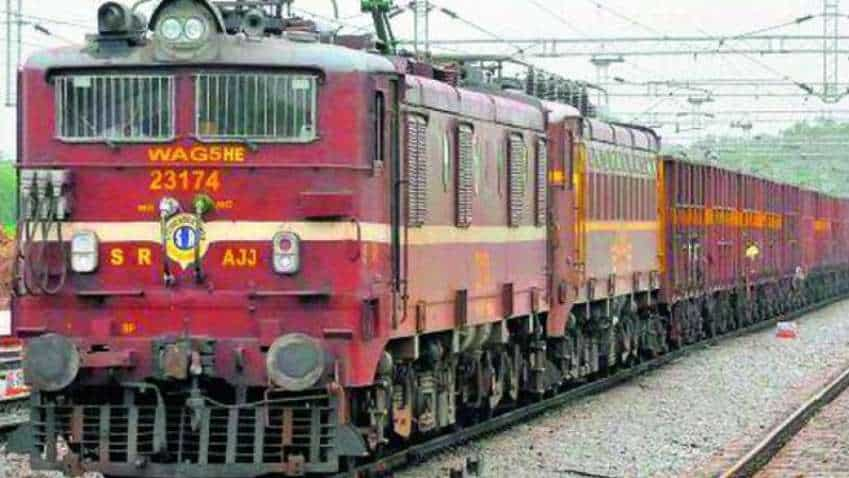Dedicated freight corridor gives boost to shift from roads to rail, says report
According to credit ratings agency CareEdge, container cargo transported through railways (rail volumes) grew by a healthy 17.63 per cent year-on-year to 74.38 million metric tonnes during the previous fiscal as compared to 12.51 per cent growth in overall container cargo volumes.

A dedicated freight corridor has given a boost to the modal (freight movement) shift from road to rail even as a host of factors, including the absence of a sector regulator, impeding this shift, a report said on Friday.
According to credit ratings agency CareEdge, container cargo transported through railways (rail volumes) grew by a healthy 17.63 per cent year-on-year to 74.38 million metric tonnes during the previous fiscal as compared to 12.51 per cent growth in overall container cargo volumes.
The rail co-efficient also expanded by 115 bps to 26.70 per cent during FY22, mainly supported by partial connectivity of the dedicated freight corridor (DFC) with Mundra and Pipavav ports on the western coast, it said.
This marks the beginning of the modal shift from roads to rail, the ratings agency added.
It noted that the slated completion of the DFC project by June 2023, increased trips of cost-effective double-stack container trains and incremental volumes of cement cargo through railways are major factors influencing the switch from roads to rail.
CareEdge said it believes that transit assurance under DFC with a reduction in transit period by 40-50 per cent for some of the routes will accelerate this transition.
Based on estimates, inventory carrying cost constitutes 43 per cent of the overall cost of logistics. Thus, a significant reduction in transit duration is expected to help in achieving just-in-time based inventory management thereby boosting the cost competitiveness of domestic goods, it said.
However, higher haulage rates for freight traffic due to extensive cross-subsidization of passenger traffic and the absence of a regulatory body for the railways are the underlying key challenges for the modal shift, according to the report.
"CareEdge Ratings expects container rail volumes to grow at a healthy CAGR of 15.60 per cent for FY2022 to FY2025 with a steady improvement of rail-coefficient by 430 bps to 31 per cent and incremental freight volumes primarily cement," it said.
CareEdge also said it believes that transit assurance under DFC aiming to squeeze the travel period by 40-50 per cent for some of the major routes and over 3x growth in the movement of cost-effective double stacker container trains by FY25 will accelerate this transition.
"Nevertheless, prevailing high haulage rates for operating container trains due to extensive cross-subsidization with passenger freight, challenges in establishing end-to-end connectivity and the absence of regulator in Railways unlike other key infrastructure segments are impeding the modal shift of cargo from roads to rail," said Rajashree Murkute, Senior Director for Corporate Ratings at CareEdge Ratings.
Get Latest Business News, Stock Market Updates and Videos; Check your tax outgo through Income Tax Calculator and save money through our Personal Finance coverage. Check Business Breaking News Live on Zee Business Twitter and Facebook. Subscribe on YouTube.
RECOMMENDED STORIES

Senior Citizen Latest FD Rates: Know what major banks like SBI, PNB, Canara Bank, HDFC Bank, ICICI Bank are providing on fixed deposits

Gratuity Calculator: Rs 38,000 as last-drawn basic salary, 5 years and 5 months of service; what will be gratuity amount?

EPFO Pension Schemes: Early pension, retirement pension, nominee pension and 4 other pension schemes that every private sector employee should know

Top 5 Small Cap Mutual Funds with best SIP returns in 1 year: See how Rs 25,000 monthly investment has grown in each scheme

Top 7 SBI Mutual Funds With Best SIP Returns in 1 Year: Rs 25,000 monthly SIP investment in No.1 fund has jumped to Rs 3,58,404
09:40 AM IST











 In 2021, Indian Railways eyes to complete most sections of Dedicated Freight Corridor (DFC) - All details here
In 2021, Indian Railways eyes to complete most sections of Dedicated Freight Corridor (DFC) - All details here Indian Railways alert! Dedicated Freight Corridor Update: Check current status of Rs 81,459 crore infra project
Indian Railways alert! Dedicated Freight Corridor Update: Check current status of Rs 81,459 crore infra project Massive drop in freight charges! Here is why Dedicated Freight Corridor will be a big boost
Massive drop in freight charges! Here is why Dedicated Freight Corridor will be a big boost  Budget 2019: Via PMGSY, government has given massive push to all forms of physical connectivity, says FM Nirmala Sitharaman
Budget 2019: Via PMGSY, government has given massive push to all forms of physical connectivity, says FM Nirmala Sitharaman India’s longest freight train network will run on ABB's power tech
India’s longest freight train network will run on ABB's power tech